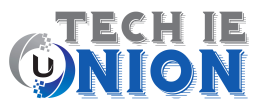Since manufacturers began offering printing services, progress has been made in the field of printed circuit board (PCB) fabrication technology. Printed circuit boards are used to provide mechanical support and connect various electrical components. They are used for high-volume production in addition to being very cost-effective.
Before it is created, the makers of a printed circuit board (PCB) only hazily define its design. A PCB is short for printed circuit board. The creation of a printed circuit board (PCB) prototype is the most crucial stage of the design process in this particular instance. During this process, the manufacturer is given the opportunity to identify whether or not the design of the PCB contains any flaws that require correction. In the event that the prototype exhibits any form of flaw, a replacement is crafted and stored until the original one is fixed to the point where it functions adequately.
The process of fabricating printed circuit boards (PCBs) is carried out in harsh environments and involves a large number of procedures, including etching, photo engraving, multi-layer processing, drilling, masking, finishing, and, finally, electrical testing. The PCB test is carried out to determine whether or not the product is effective and whether or not it fulfils its intended purpose.
However, some manufacturers make use of a variety of PCB requirements, such as polyimide for flexibility, Arlon for extended life in high temperatures, and the Isola range for the PCB prototype, to get the desired level of performance from their products. If the PCB Test yields a negative result, the entire circuit board must be replaced, or the problem must be addressed accordingly.
On the other hand, when we talk about PCB Assembly, we mean the process of connecting electronic components to a circuit board. This is what we mean when we talk about PCB assembly. The surface-mount method and the through-the-hole technique are two of the most important techniques used in connecting these electronic components to the printed circuit board (PCB).
However, the majority of circuit boards use a combination of both of these strategies in order to obtain the highest possible level of effectiveness in the design and operation of the printed circuit board. However, in certain instances, manufacturers will use highly competent experts to solder minute or small components while observing them under a microscope. They also make use of additional tools such as tweezers, soldering tips, and other such items.
In addition to the necessary tools, a printed circuit board must also go through the processes of PCB fabrication, PCB assembly, and PCB testing in order to be finished. As a result, everything requires the appropriate level of care.
Therefore, before picking your manufacturer, you should conduct extensive research about the firm and its history and make sure you can work with them based on their reputation. This will make sure that the services you get back are real and of the best quality possible.
PCB testing follows closely after PCB fabrication as one of the most crucial steps in the manufacturing process.

